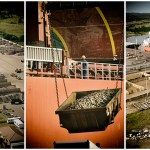With the winter solstice behind us, the days are lengthening again in an annual cycle of renewal. But don’t expect any rays of sunshine in Finance Minister Tito Mboweni’s emergency Budget.
One certainty is that the numbers will change, and for the worse.
Four months ago, National Treasury — in a Budget that now reads like a dusty historical relic on display in a museum — was forecasting the economy would grow 0.9% in 2020 with a budget deficit of 6.8% of gross domestic product (GDP). The debt-to-GDP ratio was seen rising to 71.6% by 2022/23 from 61.6% in 2019/20.
Those numbers are now effectively meaningless. The small growth forecast will be replaced by a contraction forecast that will be nothing short of massive. The South African Reserve Bank (SARB) forecast is for a 7% shrinkage, but most economists are predicting closer to 10% — a depression-level event that would set South African output several years back.
Data backs a dim prognosis. Business confidence is at a record low — even worse than it was in the 1980s during sanctions and the state of emergency — while transactions between banks have plummeted. Production in the mining sector, which was allowed to partly operate even during the hard lockdown, sank 47% in April. Retailers have faced a complete bloodbath while Sasol — a South African corporate colossus — has told unions it faces collapse without stringent measures including job cuts. Meanwhile, poverty and hunger have surged, while the projected revenue shortfall is around R285-billion.
“As usual there is a key challenge of forecasting what is presented vs the eventual reality,” Peter Attard Montalto, the head of capital markets research at consultancy Intellidex, said in an emergency Budget preview to clients.
“We think the deficit will be around -15.4% GDP this year, then be sticky at around -10% GDP in the coming two years. That means debt would jump from 61.7% GDP at the end of the last fiscal year to 80.8% and then 87.6%, reaching 100% by start 2024/25. Our core forecast is that we don’t see debt … (stabilising) over time.”
However, the numbers presented on Wednesday may be a little more optimistic than that.
“We think National Treasury will show a deficit a little less than this, maybe around -14% for this year, falling to -10% next year but then falling back faster to around -8% after that and so on. This means debt rises only to around 82% at end period and then stabilises over the long term at around 90% GDP.”
National Treasury said on Saturday 20 June that the New Development Bank (NDB) had approved a $1-billion loan for South Africa, with the proceeds to be used for healthcare and to boost the social safety net. A potential loan of more than $4-billion from the International Monetary Fund (IMF) is in the pipeline.
There is no question that South Africa’s debt levels — which soared under the Zuma years in part to feed the ANC patronage machine with public service jobs, in part because of outright looting and incompetence — will climb further. The market focus will be on the expected size and pace of the swelling, and whether or not the forecasts look convincing. So it could be a bad day for the rand.
National Treasury said on Saturday 20 June that the New Development Bank (NDB) had approved a $1-billion loan for South Africa, with the proceeds to be used for healthcare and to boost the social safety net. A potential loan of more than $4-billion from the International Monetary Fund (IMF) is in the pipeline.
But there is no magic bullet or panacea. SARB Governor Lesetja Kganyago pointedly said on 18 June that while the central bank has bought South African government bonds as an emergency measure, it is not going to crank up the printing presses and endlessly devour public sector debt. South Africa will have to rely on the markets to fund its budget needs.
Mboweni also faces resistance from unions over his plans to cut the bloated public sector wage bill — plans made politically tougher because of the pandemic’s impact on the economy. Then there is the never-ending question of failing state-owned enterprises (SOEs), notably SAA and Eskom.
The Sunday Times reported that Mboweni said in a Nedlac briefing on Friday 19 June that government spending was now bigger than private investment as a percentage of GDP — thanks to the public sector wage bill — and that South Africa’s recovery needed to focus on exports, competitiveness, and “serious reform” of SOEs.
New taxes will likely be off the board for now, though a hike in sin taxes is possible to placate the anti-booze and anti-tobacco brigade in the Cabinet. One suspects the Sovereign Wealth Fund announced in February may be put on the back burner. But such things are pretty minor at this stage. This Budget is about survival, plain and simple. BM/DM


















